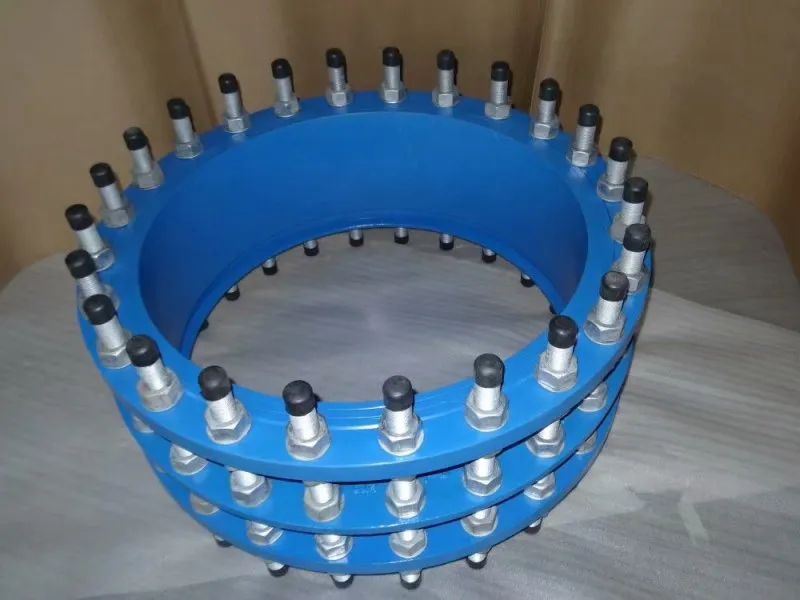butterfly wafer type valve
Understanding the Butterfly Wafer Type Valve
In the realm of fluid control technology, the butterfly wafer type valve stands out as an essential component in a variety of applications. Renowned for its efficiency, compact design, and versatility, this valve type has found widespread use in industries ranging from water treatment to chemical processing and HVAC systems.
What is a Butterfly Wafer Type Valve?
A butterfly wafer type valve is a quarter-turn valve that utilizes a rotating disc or butterfly to regulate flow. This design allows for rapid opening and closing, making it an ideal choice for applications where quick operation is necessary. The term wafer refers to the valve’s construction method. Unlike other valve types that may require flanges, wafer valves are mounted between two flanges in a piping system, providing a lightweight and streamlined solution.
Construction and Design
The basic structure of a butterfly wafer valve includes a disc, a stem, and a seat. The disc is mounted on a stem that allows it to pivot when the valve is operated. The disc's position controls the flow of the fluid – by rotating 90 degrees, the valve can either be fully opened or closed. Common materials used for the construction of butterfly valves include ductile iron, stainless steel, and various plastics, making them suitable for different types of fluids and environments.
The seating mechanism is critical for preventing leaks. Many butterfly wafer valves feature an elastomeric seat that provides a tight seal when the valve is closed. In applications that involve high pressure or temperature, metal seats can be utilized for added durability.
Advantages of Butterfly Wafer Type Valves
1. Space Efficiency Due to their compact design, butterfly wafer valves are perfect for installations where space is limited. Their slim profile is beneficial in crowded piping systems, offering significant space savings compared to traditional gate or globe valves.
2. Lightweight Compared to other valve types, butterfly valves are typically lighter, which simplifies installation and reduces the weight load on supporting structures.
butterfly wafer type valve

3. Quick Operation The quarter-turn operation allows for rapid opening and closing, which is essential in applications requiring speed and responsive flow control.
4. Flow Control Butterfly valves provide excellent throttling capabilities, allowing operators to adjust flow rates precisely.
5. Cost-Effective The simplified design and manufacturing process of butterfly wafer valves often make them a more economical choice compared to other valve types, both in terms of purchase cost and maintenance.
Limitations to Consider
While butterfly wafer valves offer many advantages, they also have some limitations. For example, they are better suited for low-pressure applications; operating them in high-pressure environments can lead to potential leakage. Additionally, because the disc is always in the flow path, there can be a slight pressure drop even when the valve is fully open.
In systems where a tight seal is critical, it is essential to choose the right material and type of butterfly valve. For instance, in applications involving corrosive chemicals, selecting a valve with a suitable lining or coating is vital to prevent premature wear and tear.
Applications of Butterfly Wafer Type Valves
Butterfly wafer type valves are used in various applications, including
- Water Treatment Regulating and controlling water flow in treatment plants. - Chemical Processing Managing the flow of chemicals in industrial processes. - HVAC Systems Controlling airflow in heating and cooling systems. - Food and Beverage Ensuring fluid control in manufacturing processes. In conclusion, the butterfly wafer type valve is a versatile and efficient solution for fluid control in numerous industrial applications. Its compact design, quick operation, and cost-effectiveness make it a popular choice, while its limitations necessitate careful consideration in specific uses. Understanding the functionality and applications of this valve type enables engineers and operators to optimize their systems for peak performance.
-
The Smarter Choice for Pedestrian AreasNewsJun.30,2025
-
The Gold Standard in Round Drain CoversNewsJun.30,2025
-
The Gold Standard in Manhole Cover SystemsNewsJun.30,2025
-
Superior Drainage Solutions with Premium Gully GratesNewsJun.30,2025
-
Superior Drainage Solutions for Global InfrastructureNewsJun.30,2025
-
Square Manhole Solutions for Modern InfrastructureNewsJun.30,2025
-
Premium Manhole Covers for Modern InfrastructureNewsJun.30,2025
